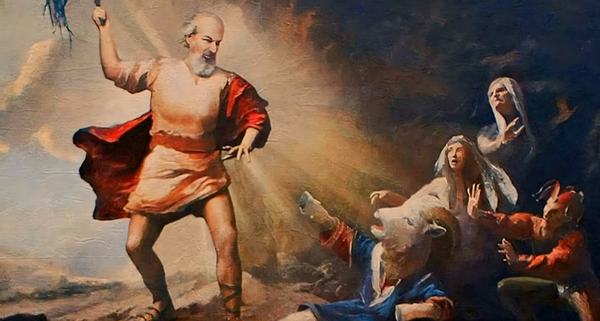David Hume, Unraveling the Mysteries of Mind and Matter

The Oxford Clarendon Hume Edition Series, edited meticulously by David and Mary Norton, offers a critical exploration of one of David Hume's seminal works, A Treatise of Human Nature: Volume 1. This profound philosophical work is not only a cornerstone in understanding human psychology but also a crucial text for anyone delving into the nature of human knowledge and understanding. In this blog post, we will embark on a detailed journey through Hume's thoughts and arguments, particularly focusing on his ideas surrounding causality and necessary connections.
Diving into this work can be an intellectually daunting experience. Hume’s dense prose and complex ideas challenge even the most seasoned readers. The book demands not just reading, but studying, as it delves into intricate philosophical arguments about human nature, knowledge, and experience.
Hume wrote in a period where scholarly works were not just vehicles of thought but also artistic expressions, often laden with elaborate linguistic styles.
Hume wrote in a period where scholarly works were not just vehicles of thought but also artistic expressions, often laden with elaborate linguistic styles. His sentences are long, structured with multiple clauses that unfold his arguments layer by layer. For contemporary readers, this can make the text seem labyrinthine, each sentence a path leading to new, often unexpected directions.
Despite these challenges, reading A Treatise of Human Nature is incredibly rewarding. It offers deep insights into human psychology and philosophical methodology that are relevant even today. Hume’s work is a foundational text in understanding empiricism and skepticism, influencing not only philosophy but also the development of modern science and rational inquiry.
Strategies for Tackling the Text
For those determined to tackle this complex work, several strategies can make the reading experience more manageable:
- Take It Slow: Don’t rush through the text. Hume’s arguments build on each other, and understanding early concepts is crucial for grasping later conclusions.
- Use Secondary Sources: Commentaries and guides can provide context and simplify complex ideas, making Hume’s original texts more accessible.
- Discuss With Others: Joining a study group or online forum can provide multiple perspectives and insights, which can deepen understanding and make the reading experience more enjoyable.
- Reflect on Contemporary Applications: Relating Hume’s ideas to current events or personal experiences can make his theories more tangible and easier to grasp.
Understanding Hume's Objective
David Hume, a philosopher of the Enlightenment era, embarked on a mission to apply the experimental method of reasoning to human psychology. He sought to understand the 'science of man' and believed that this would form the foundation for all other sciences. His method was simple yet revolutionary: observe human behavior and draw conclusions about the nature of human thought and emotions.
The first volume of A Treatise of Human Nature lays the groundwork for what Hume sees as the basics of human nature. He divides his observations into several key areas, including the understanding of perceptions, which he categorizes as impressions and ideas. Impressions, Hume argues, are our direct sensory experiences, vivid and lively. In contrast, ideas are the faint images of these in thinking and reasoning.
Causality and Necessary Connection
One of the most significant contributions Hume makes in this volume relates to causality, a concept he revisits multiple times throughout his work. Hume challenges the then-prevailing notions of causality, which suggested that one can perceive a necessary connection between causes and effects. According to Hume, our belief in causality and the necessary connection of events stems not from reasoning or any analytical process but from habit and custom.
Our understanding of the universe and our expectations of it are not rooted in reason itself but in our experiences and the habits they engender.
Hume's skepticism about causal reasoning is radical. He asserts that we never actually perceive the cause and effect directly linked but rather develop a mental habit from repeatedly observing their conjunction. For example, we expect the sun to rise each morning because it has always done so in our past experience, not because we see an inherent connection between our past observations and what will happen tomorrow.
This perspective has some implications, however. It suggests that our understanding of the universe and our expectations of it are not rooted in reason itself but in our experiences and the habits they engender. This idea leads Hume to question the basis of scientific laws and the certainty with which we can claim to know anything about the external world. An interesting counterpoint to Hume worth exploring: Lindley, T. F. (1987). David Hume and Necessary Connections. Philosophy, 62(239), 49–58. http://www.jstor.org/stable/3751019.
Empirical Foundations of Knowledge
Underpinning Hume's arguments about causality is his firm belief in empiricism—the idea that all knowledge comes from sensory experience. He rigorously applies this standard throughout the treatise, examining how even complex ideas like the self are ultimately traceable back to simple sensory experiences.
Hume's ideas were not without controversy. His empirical approach and questioning of causality were seen as skeptical and potentially nihilistic, challenging the very basis of scientific and religious knowledge. However, these ideas were also profoundly influential, paving the way for later thinkers in the fields of philosophy, psychology, and the natural sciences.
Today, Hume's ideas remain relevant, influencing areas from cognitive science to contemporary philosophy and physics. His questioning of causality, necessary connection, and the limits of human understanding challenges us to think critically about the foundations of our beliefs and knowledge.
Conclusion
In the first volume of A Treatise of Human Nature, Hume sets forth a challenging and meticulously argued vision of human psychology and knowledge. His exploration of causality and necessary connections invites us to reconsider how we know what we know and to remain humble about the limits of human understanding. The Oxford Clarendon Hume Edition Series, with its careful editing and presentation, provides a vital resource for anyone seeking to understand these complex and still-relevant ideas.
As we revisit Hume's writings, we find a rich, albeit skeptical, landscape that continues to invite exploration and interpretation. This philosophical journey is not just about revisiting historical ideas but also about applying them to contemporary questions about how we perceive the world and our place within it.





